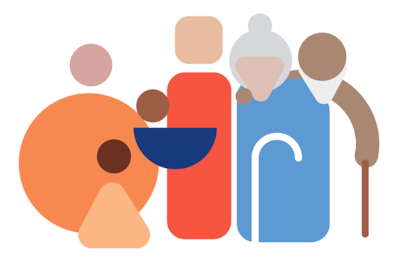mHealth4Afrika is a three year collaborative research project that addresses maternal and newborn healthcare delivery, a key requirement of end-user communities in developing countries, and priority area in both the 2015 Millennium Development Goals and Post-2015 Sustainable Development Goals. Aligned with Horizon 2020 Societal Challenges, mHealth4Afrika will research and evaluate the potential impact of co-designing an open source, multilingual mHealth platform on the quality of community based maternal and Newborn healthcare delivery in Southern Africa (Malawi, South Africa), East Africa (Kenya) and Horn of Africa (Ethiopia).
mHealth4Afrika project has the following objectives:
- To research requirements (patient record system functionality, user interface, sensor, linguistic, privacy and security, and infrastructure requirements) based on engagement with healthcare professionals and end-user community representatives in urban, rural and deep rural clinics in Southern Africa (Malawi and South Africa), East Africa (Kenya) and Horn of Africa (Ethiopia);
- To research and evaluate the challenges and potential benefits associated with designing a common multilingual patient record framework for use in resource constrained clinics leveraging some of the functionality of District Health Information System 2.0 (DHIS2) and Tracker Capture;
- To research and evaluate the challenges and potential benefits associated with leveraging and integrating the use of medical sensors, tablet friendly user interfaces with DHIS2 in resource constrained clinics;
- To co-design and implement an integrated, mobile-oriented, multilingual mHealth system based on an agile approach focused on maternal and new born healthcare in urban, rural and deep rural communities, suitable for wide adoption across Africa after the project ends;
- To provide a cost effective, mobile-enabled and above all, user-friendly solution suitable for use by healthcare professionals and community healthcare workers in resource constrained environments, facilitating optional use of multiple communication protocols;
- To train healthcare workers in urban, rural and deep rural clinics on the coordinated, integrated use of medical sensors, patient records and multilingual mobile user interfaces to support more efficient, high quality healthcare delivery in resource constrained environments; and
- To take an iterative approach to piloting the integrated solution in health clinics in Southern Africa (Malawi and South Africa), East Africa (Kenya) and Horn of Africa (Ethiopia) to sensitise healthcare workers and beneficiaries, assess usability and user acceptance and identify any modifications or adaptation required to facilitate wide adoption at national and regional level.
Child mortality and maternal health are long standing challenges in Developing Country contexts. WHO reports that “6.3 million children under the age of five died in 2013” and “99% of all maternal deaths occur in developing countries and the maternal mortality ratio in developing countries in 2013 is [an average of] 230 per 100,000 live births versus 16 per 100,000 live births in developed countries”. This explains why two of the eight Millennium Development Goals (MDG 5 – Improve Maternal Health, MDG 4 – Reduce Child Mortality) were focused on these areas and why Maternal Healthcare remains a priority area in Post-2015 Sustainable Development Goals. There is a growing healthcare crisis in developing countries. According to a WHO/Global Health Workforce Alliance report (2013), based on a minimum density threshold of 34.5 skilled health workers per 10,000 population, Africa has a current deficit of 1.8 million skilled health workers (25% of global total). Based on expected population growth by 2035, this could grow to a deficit of 4.3 million – 34% of global total. WHO highlighted “wide variation in availability and accessibility persists within countries because of attraction and retention difficulties” It is interesting that the 2011 WHO Second Global Survey on eHealth concluded that “mHealth in the high-income countries is driven by the imperative to cut healthcare costs, while in developing countries it is mainly boosted by the need for access to primary healthcare”.
SRDC is the Workpackage Leader for WP5 (Sensors for low resource settings). SRDC has a very focused role in this project specifically on the use of standards to integrate sensor readings with the patient record system where the data will be stored, implementing any new protocols required for additional or replacement sensors and providing input in relation to visualisation of the sensor data in WP4 (End User Interface & Software Service Design). SRDC will also contribute to WP1 (Dissemination & Exploitation) activities.
| 1. | IIMC | Ireland | |
| 2. | Nelson Mandela University | South Africa | |
| 3. | Strathmore University | Kenya | |
| 4. | University of Gondar | Ethiopia | |
| 5. | University of Malawi | Malawi | |
| 6. | University of Oslo | Norway | |
| 7. | SRDC | Turkey |










Pingback: We are the most successful Turkish SME in Horizon 2020 too! | SRDC